Basically, all visitors to Korea have heard about a place called Incheon – for the simple fact that the city 28 kilometers west of the capital Seoul is home to the country’s busiest airport. But this major hub has also an amazing superlative in store: According to the Guinness Book of Records, Incheon is home to the World’s Largest Mural!
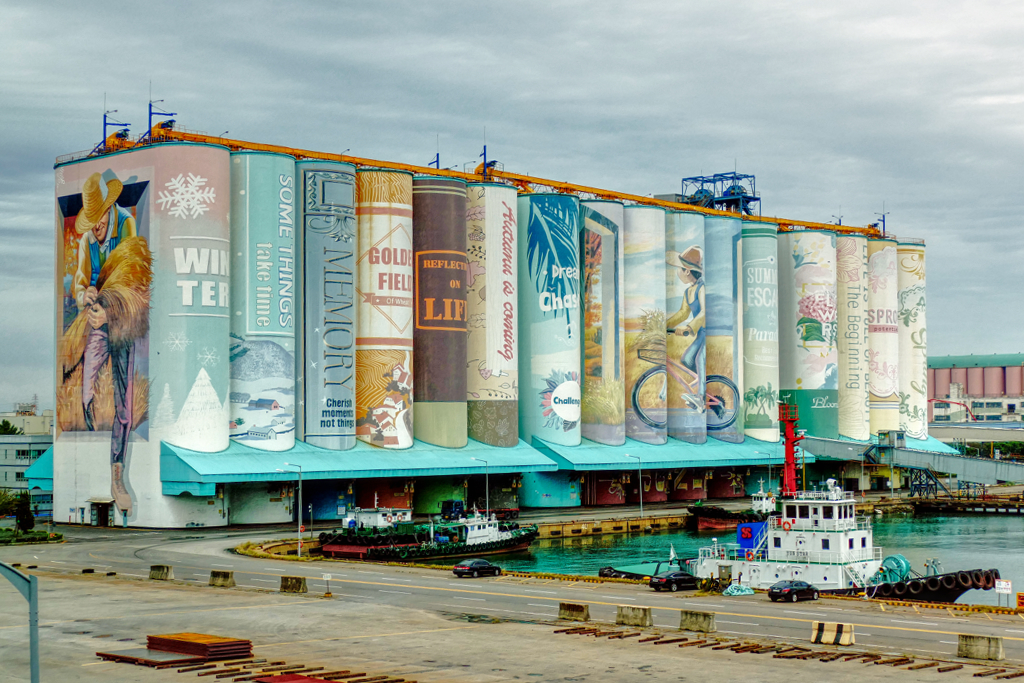
Revamping the Port
In 2018, the Incheon city government and Incheon Port Authority commissioned 22 artists to paint a grain silo in the port. It was one of the measures to improve the negative image of the old industrial facilities. They intended to give tourism on Wolmi Island a boost. To achieve their goal, they invested a whopping 550 million ₩on which equals almost half a million US$!

The silo is 48 meters high, 168 meters long, and 31.5 meters wide which gives the mural a size of almost 24,000 square meters. More than 850,000 liters of paint went into the work. All good reasons for the Guinness World Records to recognize the gigantic painting as the world’s largest mural.
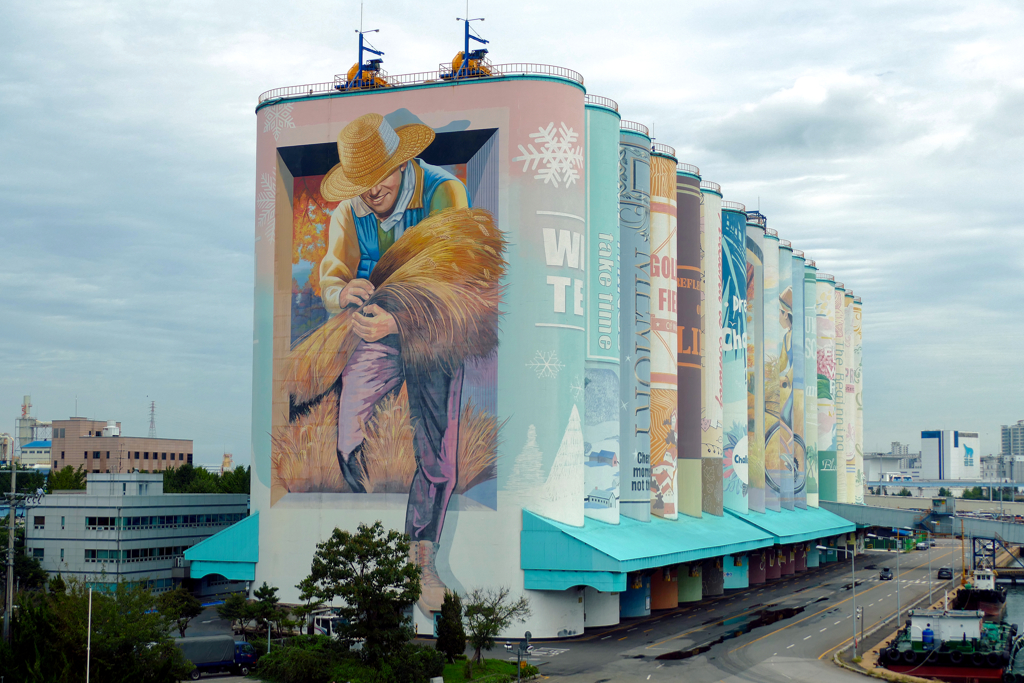
The original shape of the silo defined the design of the art project. It represents 16 books on a shelf. These books guide a young boy through the years into adulthood. They direct him with wisdom and encouragement, leading him through the four seasons, which could ultimately also be interpreted as phases of life.
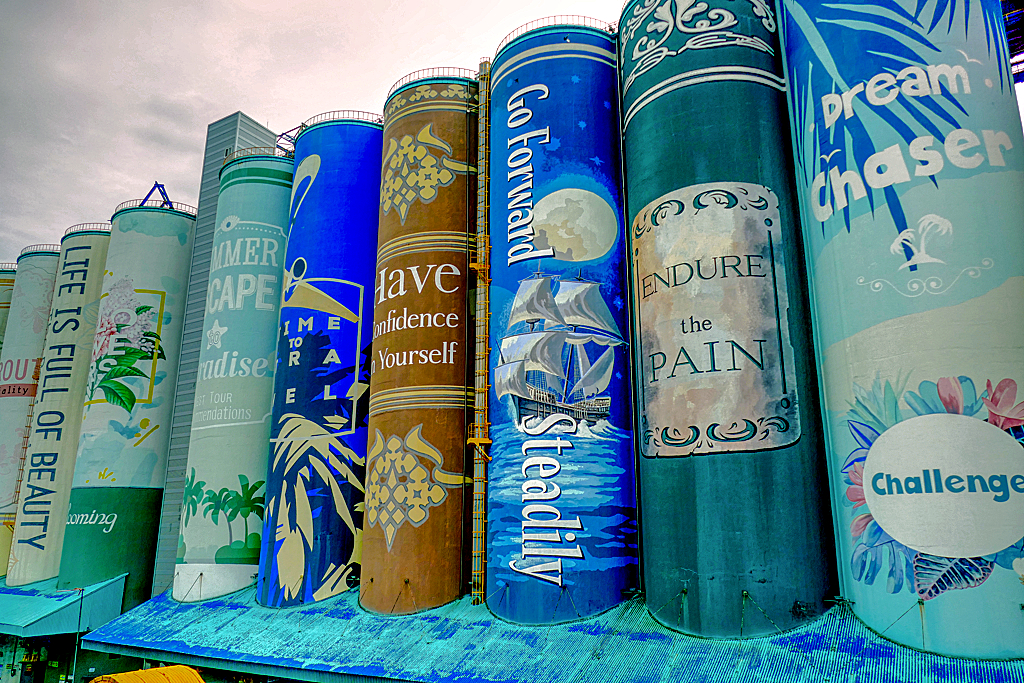
After having experienced the love Koreans have for books firsthand, I’m not surprised that this iconic mural is book-themed.
Actually, I put together a list of my five favorite bookstores in Seoul and also recommended some gripping reads by Korean novelists: Best And Most Beautiful Bookstores in Seoul.
Hidden Gem – Literally
Urban Art is totally my thing, hence, I was absolutely stoked by the idea of seeing the world’s largest mural on a day trip from Seoul. Therefore, I was all the more disappointed that there was practically no place outside the fenced harbor area to get a good view of the work.
What good is the world’s largest work of art if nobody can see it?
Although I don’t really like travelling on tourist trains, I grudgingly decided to take a ride on the Wolmi Sea Train since the rails are at the same height as the mural.
While an extremely friendly lady explained things that were certainly very interesting – I can’t say for sure since she only spoke Korean – we drove through an amusement park that reminded me strongly of the withering charm of Coney Island. We passed a picturesque coastal road and the pier in the industrial port which was full of cars waiting to be shipped.
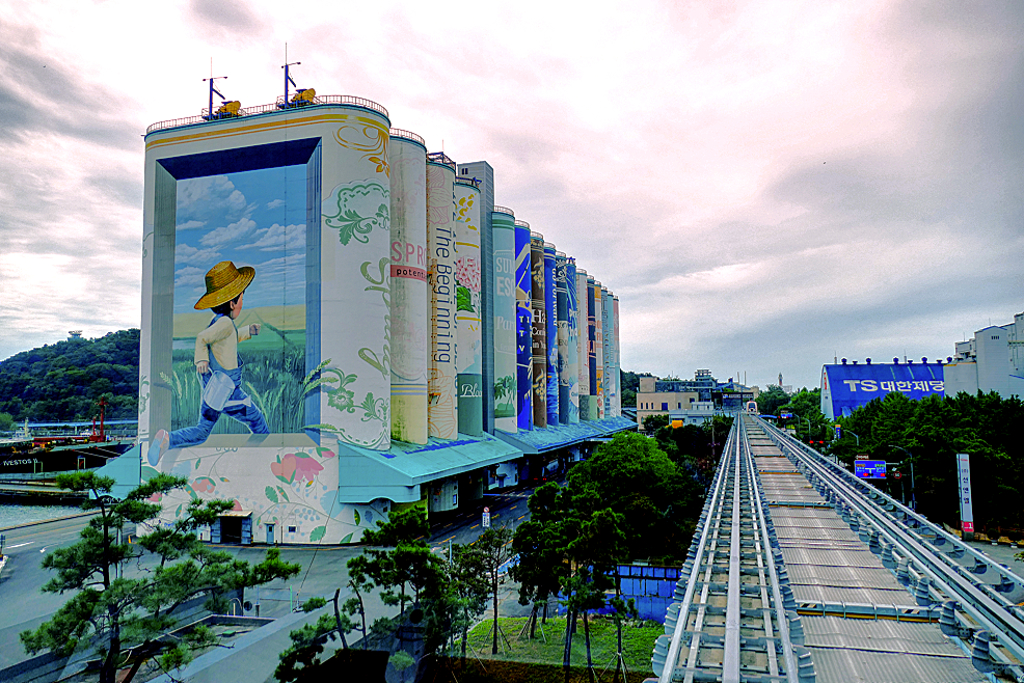
Then the tracks made a sharp curve and I finally had a clear view of the largest mural in the world!
The Wolmi Sea Train runs every couple of minutes between 10 a.m. and 6 p.m. from Tuesday to Friday and on weekends until 9 p.m. A general ticket that you can purchase at each one of the four stops costs KR₩ 8,000. It is actually good for a total of three rides in case you’d like to get off at one of the four stops and continue the tour later.
Incheon: More Than An Airport
Tons of visitors to Korea have been to Incheon without having seen it. They only visited the international airport, and that’s it. However, with almost 2.9 million inhabitants, Incheon is the third largest city in South Korea after Seoul and Busan. Yet, due to its proximity to Seoul, it has always been considered the capital’s satellite city despite its size. Although Incheon is politically autonomous, the cities have grown almost seamlessly into one. Even their subway systems operate as one.
When the commercial port of Incheon opened back in 1883, the city had as little as 4,700 residents. The same year, immigrants from China established one of the earliest Chinese communities away from the motherland in Incheon. To this date, it is Korea’s only official Chinatown.
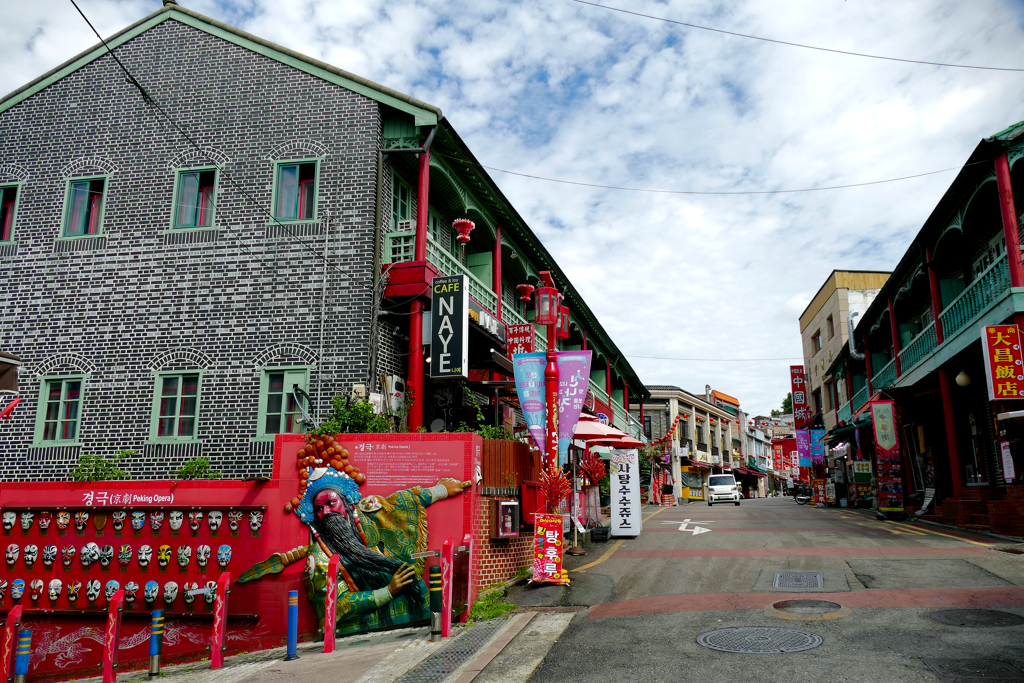
Buildings in red and gold as well as signs written in Chinese line Chinatown-ro and the adjacent alleys. In restaurants, Chinese-Korean fusion dishes such as jajangmyeon, jjamppong, and tangsuyuk are served alongside truly authentic Chinese cuisine. Yet, Incheon’s so-called Chinatown is still widely a residential area and home to second- and third-generation descendants of the first migrants of the Qing Dynasty.
There Is More
With the Silo being the world’s largest mural, it actually isn’t the only amazing piece of street art in Incheon.

As you step through the iconic Paifang, the entrance gate to Incheon’s Chinatown, the street lined with Chinese-style houses bends to the left and takes you to rows of beautifully painted stairs. Leading up to the blue-tiled Seollinmun gate, they depict panda bears, the iconic Great Wall, and all things Chinese.
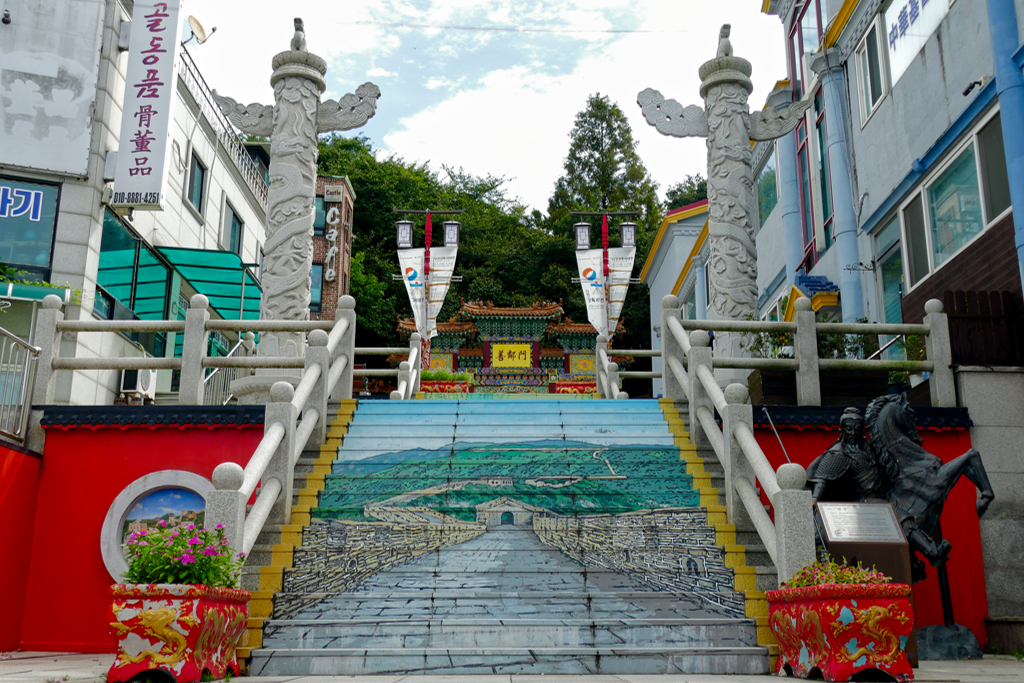
Also, there are two beautifully decorated mural streets in Chinatown.
77 depictions in different sizes are telling the third-century Chinese epic Records of the Three Kingdoms in the Samgukjin Mural Street right below Jayu Park. These murals are meticulously painted on glazed tiles and are basically a stoneware comic book. Very unique, very interesting – and absolutely beautiful.
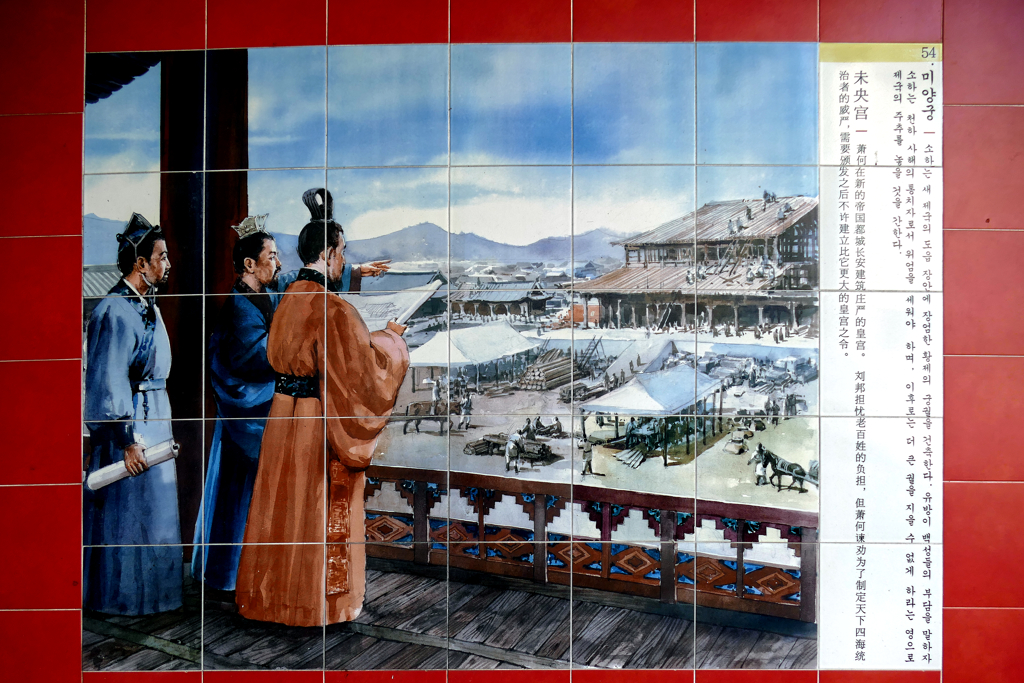
But the Records of the Three Kingdoms is not the only comic strip decorating the streets of Chinatown. On the opposite side of Jayu Park is the Chohanji Mural Street where 56 works tell about the rivalry between Xiang Yu and Liu Bang for supremacy in China.
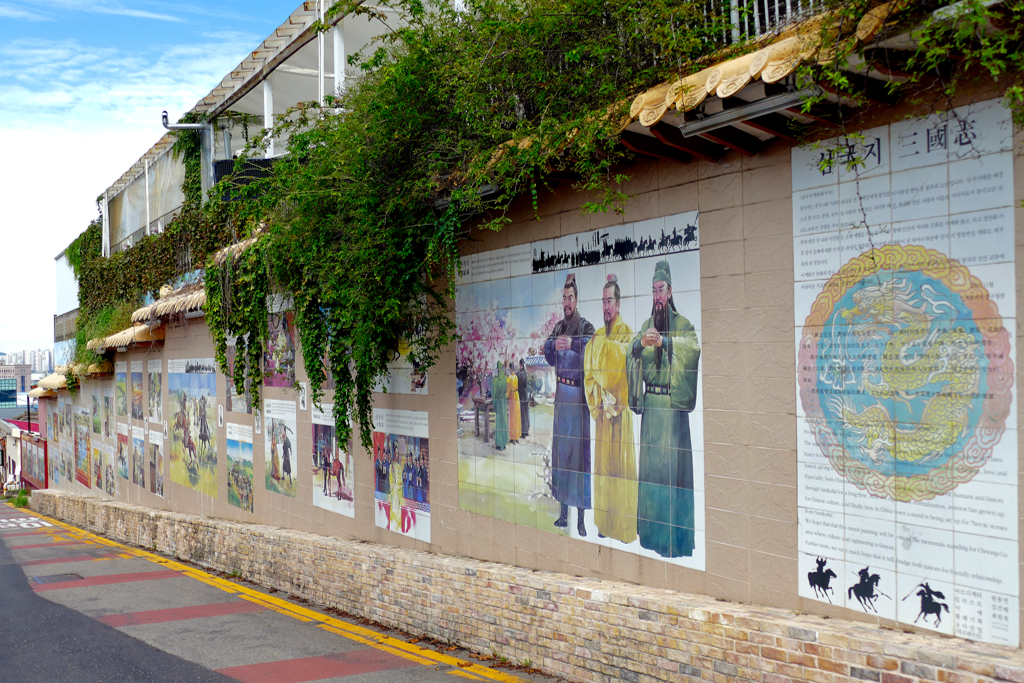
The tiles also depict the legend of Han Xin who defeated the enemy, and the wise and loyal Zhuge Liang. It’s pretty amazing how these mural streets make diving into history fun.
How to Get There And Around
No trip is as easy as going from Seoul to Incheon: Just hop anywhere in the city on subway line #1 and go all the way to the final stop which happens to be Incheon. While it’s easy, it can get very long. Depending on where you board the subway, it can take up to two hours.
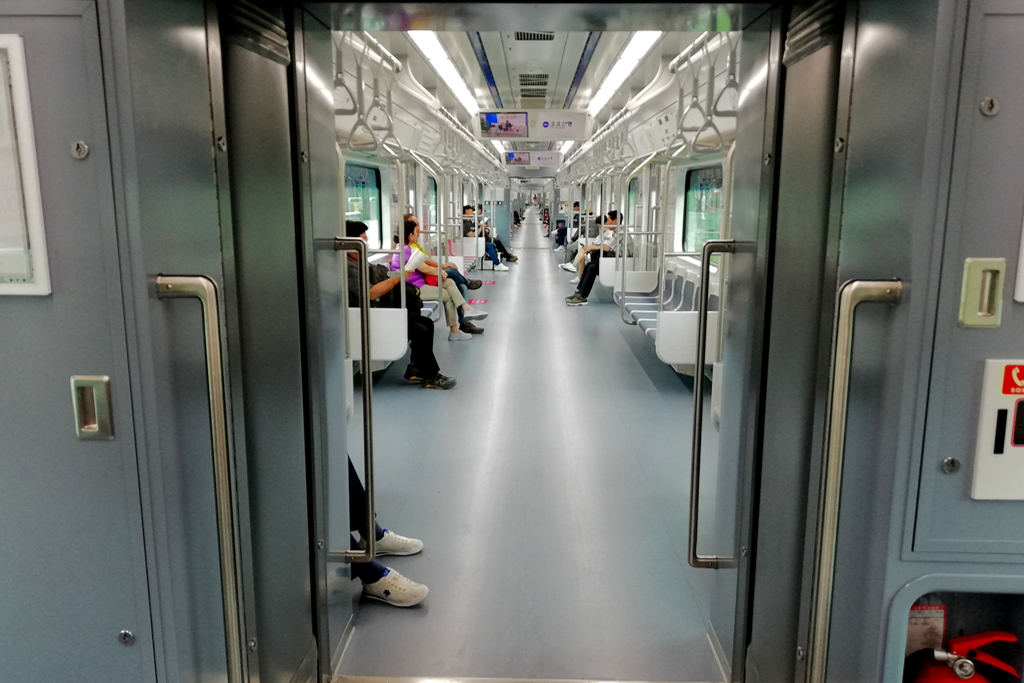
Although Incheon is the third-largest city in South Korea, the touristy places of interest are concentrated more or less around the subway station and can be easily explored by walking. If you want to visit Wolmido or other places that are farther from the main station, city buses will take you basically everywhere.
The World’s Largest Mural is only one of many amazing things you can do in Incheon. Read here about my day trip to Incheon during my stay in Seoul. However, as for day trips, I also paid Suwon a visit where I took a wonderful hike on the old city wall, and I spent lazy hours on Mallipo Beach.
To read about other great places I’ve seen on my tour around South Korea, go to the main post and take your pick! There, you’ll also find further valuable general information that will make your trip to Korea smoother and much more enjoyable.
Pinnable Pictures
If you choose to pin this post, please use one of these pictures
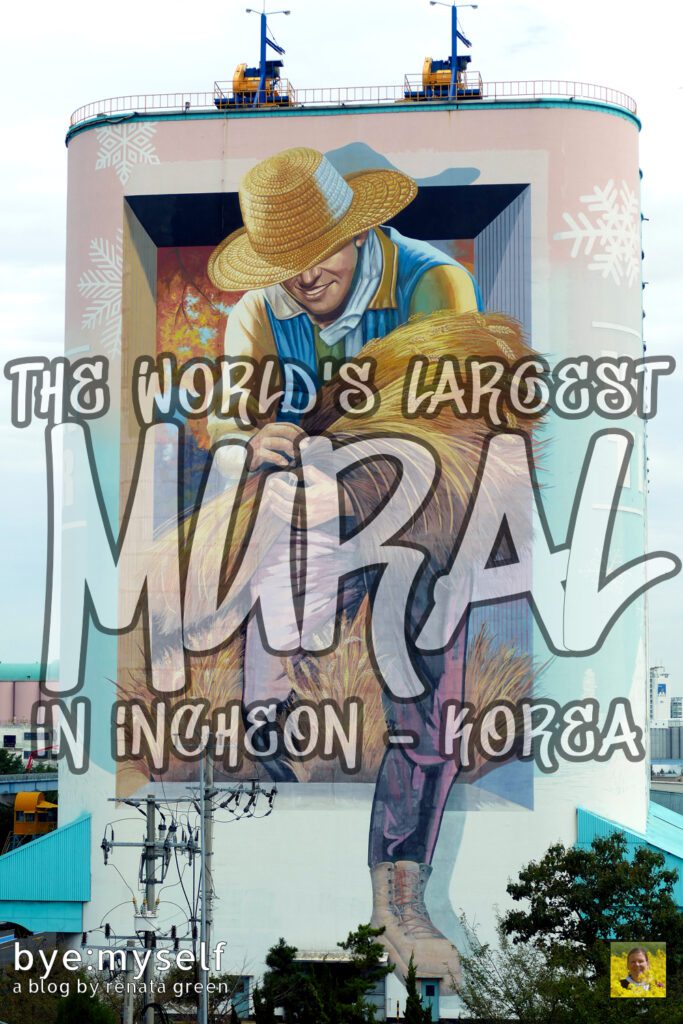
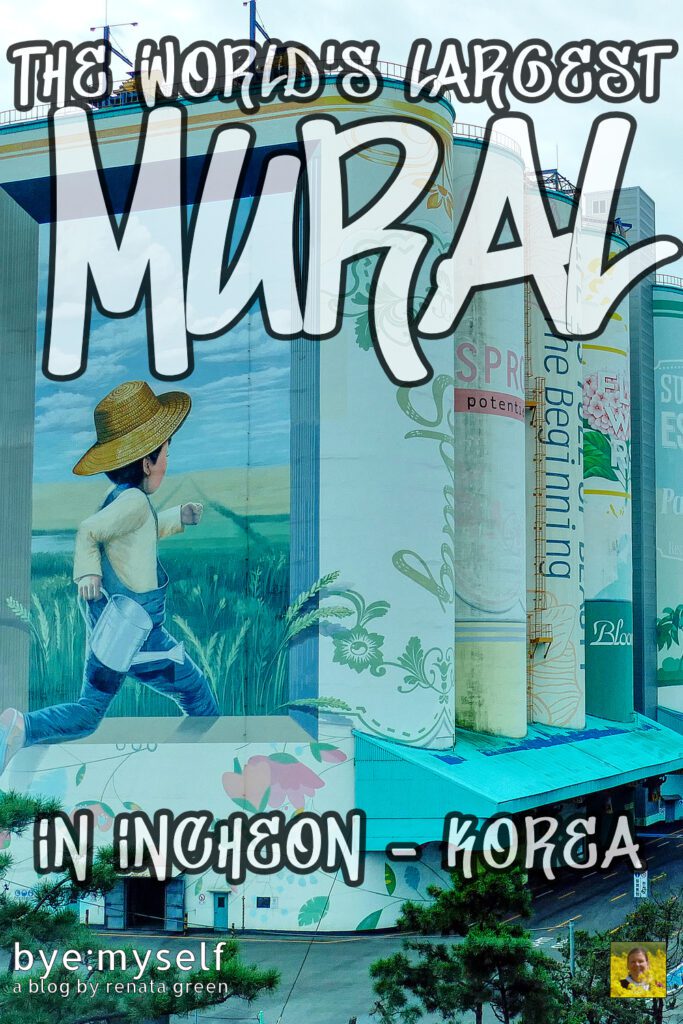

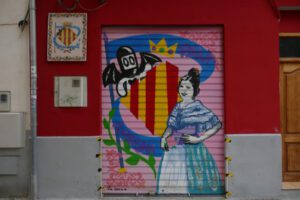
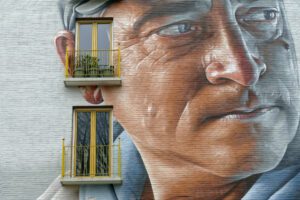

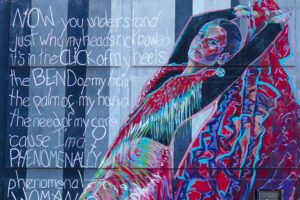


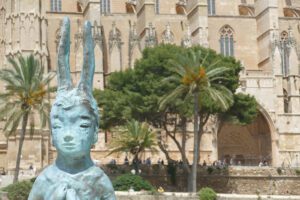
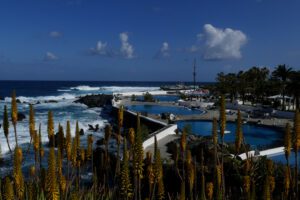
Thanks for this wonderful post about Incheon. I think, I visited the town more than 20 years ago on my first visit to Korea. It was very backwards then. The world largest mural – that is really something. I like the idea of taking a train to get a good view on the mural. Incheon itself looks like a city worth exploring too. Actually, I hope to visit Korea after one of my Japan trips next year…so I will pin your post for later.
We would definitely want to visit Incheon to see the world largest mural. I have seen grain silo paintings before but not a large group like this. How fun to find a mural that is book-themed. Glad you kept wandering and found more colourful street art.